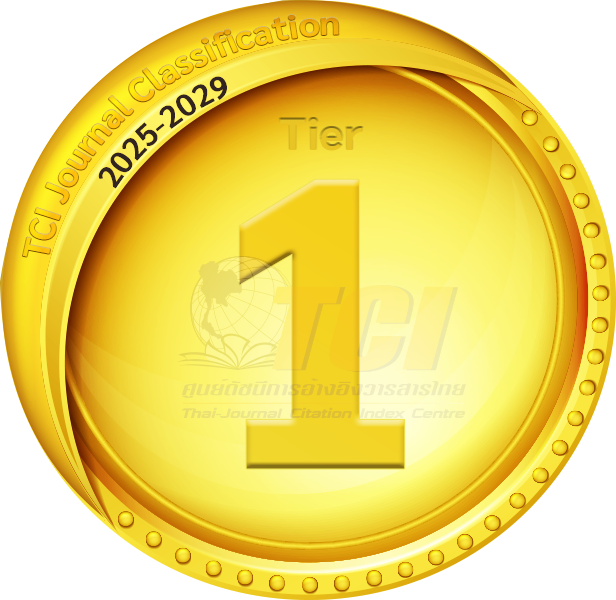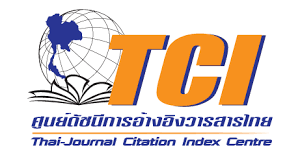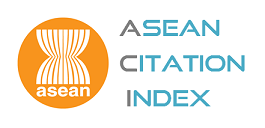The Analysis of Community Resilience and Fire Risk Management: a Case Study of Chiang Mai
- Supiya Punyathong, School of Architecture, Art, and Design, King Mongkut's Institute of Technology Ladkrabang, Ladkrabang, Bangkok 10520, Thailand, Corresponding author’s E-mail: 62602004@kmitl.ac.th
- Prapatpong Upala, School of Architecture, Art, and Design, King Mongkut's Institute of Technology Ladkrabang, Ladkrabang, Bangkok 10520, Thailand
Abstract
The bustling Northern Thai city of Chiang Mai has a number of mixed-use areas, which are spaces of interaction of community and shopping areas, which are known as "Kad" or "Markets". These areas have high densities of commercial and residential activity. These busy and crowded market areas and the communities that have developed in and around them may feature the critical factors that make them "Fire Risk Areas". Therefore, in this study, the researcher studied the variables and physical relationships that led to some of the Chiang Mai market areas becoming fire risk areas, and then performed risk prioritization in the same areas to determine risk classes as key data for managing the areas. The market areas were examined for 7 factors: age of the area, population density, commercial land use, residential land use, type of building material, road networks, and fire station location. A Geographic Information System (GIS) was applied in the study for processing and analysis by determining the weight of each factor and the data type score of the factor. Based on the factor analysis, market areas were classified into 5 classes of fire risk: very high, high, moderate, low, and very low. The results can be used in systematic and logical planning and incident management. Analysis based on the key variables that could cause community fire risks within a radius of 400 meters around the markets revealed that there were 8 areas that met fire risk criteria. Of the 8 markets analyzed, 3 areas, namely communities surrounding Chiang Mai Gate Market, Ming Muang Market, and San Pa Koi Market were at high fire risk, 3 areas, namely communities surrounding Kom Market, Chang Puak Gate Market, and Warorot Market were at medium fire risk, and 2 areas, namely communities surrounding Siriwattana Market and Ton Payom Market were at low fire risk. The classification of fire risks can facilitate risk prioritization and thus lead to better ways of handling serious and less serious risks. Our research can help communities to analyze which areas are at serious risk and need prompt action. Furthermore, the research can be used to plan for risk management in the next phase of development.
Keywords: Fire risk, Risk management, Surrounding the market, Community Resilience
References
Blaikie, P., Cannon, T., Davis, I., & Wisner, B. (2004). At risk: natural hazards, people's vulnerability and disasters. London, UK: Routledge. https://doi.org/10.4324/9780203714775
Bureau of Disaster Prevention Measures. (2008). Community Fire Risk Assessment Manual. Department of Disaster Prevention and Mitigation, Ministry of Interior. Bangkok.
Chiang Mai Municipality. (2014). Thetsabanyat thetsabannakorn Chiangmai (In Thai). Retrieved from http://www.dpt.go.th/wan/lawdpt/dta /02/2559/132_33g_100258_1.pdf
Daungthima, W, & Tansukanun, P. (2018). Development of Neighborhoods and Districts of Chiang Mai City. Journal of the Faculty of Architecture King Mongkut's Institute of Technology Ladkrabang, 27(2), 134-151.
Fisher, R. (1985). Neighborhood organizing and urban revitalization: a historical perspective. Journal of Urban Affairs, 7(1), 47-54.
Francis, M. (1989). Control as a dimension of public-space quality. In Public places and spaces (pp. 147-172). Boston, MA: Springer US.
Hewitt, K. (2014). Regions of risk: A geographical introduction to disasters. New York, US: Routledge.
Knox, P. L. & Pinch, S. (2000). Urban social geography: an introduction. New Jersey: Prentice Hall.
Natsupa, C. (2014). Karn pen samai mai kab naewkid chumchon (In Thai). Bangkok, Thailand: Sang San.
Nuthammachot, N., & Stratoulias, D. (2021). Multi-criteria decision analysis for forest fire risk assessment by coupling AHP and GIS: Method and case study. Environment, Development and Sustainability, 23, 17443–17458. https://doi.org/10.1007/s10668-021-01394-0
Simonds, J. O. (1994). Garden cities 21: creating a livable urban environment. New York, US: McGraw-Hill, Inc.
UNISDR. (2009). “UNISDR Terminology”. Retrieved from https://www.unisdr.org/we/inform/terminology. Accessed on 21/4/2023.
Vinnem, J. E. (2010). Risk analysis and risk acceptance criteria in the planning processes of hazardous facilities—A case of an LNG plant in an urban area. Reliability Engineering & System Safety, 95(6), 662-670. https://doi.org/10.1016/j.ress.2010.02.005

Indexed in


Search